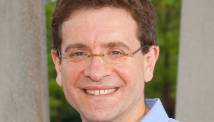Forecasts of snow, sleet and freezing rain threatened to complicate Christmas Day travel around the nation's midsection Tuesday as several Gulf Coast states braced for a chance of twisters and powerful thunderstorms.
A blizzard watch was posted for parts of Indiana and western Kentucky for storms expected to develop Tuesday amid predictions of up to 4 to 7 inches of snow in coming hours. Much of Oklahoma and Arkansas braced under a winter storm warning of an early mix of rain and sleet later turning to snow.
Some mountainous areas of Arkansas' Ozark Mountains could get up to 10 inches of snow amid warnings travel could become "very hazardous or impossible" in the northern tier of the state from near whiteout conditions, the National Weather Service said.
Early Tuesday, the Oklahoma Department of Public Safety said some bridges and overpasses were already becoming slick. Also, Kathleen O'Shea with Oklahoma Gas and Electric said the utility was tracking the storm system to see where repair crews might be needed among nearly 800,000 customers in Oklahoma and western Arkansas.
Elsewhere, areas of east Texas and Louisiana braced for possible thunderstorms as forecasters eyed a swath of the Gulf Coast from east Texas to the Florida Panhandle for the threat of any tornadoes.
Storms expected during the day Tuesday along the Gulf Coast could bring strong tornadoes or winds of more than 75 mph, heavy rain, quarter-sized hail and dangerous lightning in Louisiana and Mississippi, the weather service said.
"Please plan now for how you will receive a severe weather warning, and know where you will go when it is issued. It only takes a few minutes, and it will help everyone have a safe Christmas," Mississippi Gov. Phil Bryant said.
Ten storm systems in the last 50 years have spawned at least one Christmastime tornado with winds of 113 mph or more in the South, said Chris Vaccaro, a National Weather Service spokesman in Washington, via email.
The most lethal were the storms of Dec. 24-26, 1982, when 29 tornadoes in Oklahoma, Missouri, Arkansas, Tennessee and Mississippi killed three people and injured 32; and those of Dec. 24-25, 1964, when two people were killed and about 30 people injured by 14 tornadoes in seven states.
In Alabama, the director of the Emergency Management Agency, Art Faulkner, said he has briefed both local officials and Gov. Robert Bentley on plans for dealing with a possible outbreak of storms.
No day is good for severe weather, but Faulkner said Christmas adds extra challenges because people are visiting unfamiliar areas and often thinking more of snow than possible twisters.
"We are trying to get the word out through our media partners and through social media that people need to be prepared," Faulkner said
During the night, flog blanketed highways at times in the Southeast, including arteries in Atlanta where motorists slowed as a precaution. Fog advisories were posted from Alabama through the Carolinas into southwestern Virginia.
Several communities in Louisiana went ahead with the annual Christmas Eve lighting more than 100 towering log teepees for annual bonfires to welcome Pere Noel along the Mississippi River between New Orleans and Baton Rouge. That decision came after fire chiefs and local officials decided to go ahead with the tradition after an afternoon conference call with the National Weather Service.
In California, after a brief reprieve across the northern half of the state on Monday, wet weather was expected to make another appearance on Christmas Day. Flooding and snarled holiday traffic were expected in Southern California.
———
Associated Press writer Bob Johnson in Montgomery, Ala., and Ken Miller in Oklahoma City, Okla., contributed to this report.
















